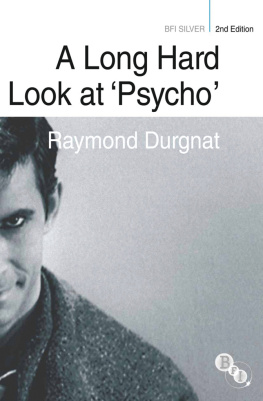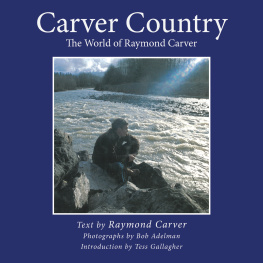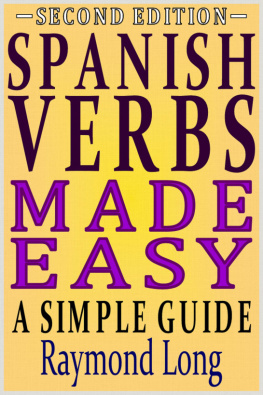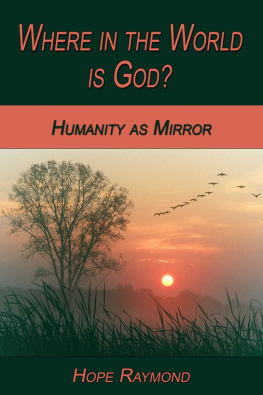Durgnat Raymond - A Long Hard Look At Psycho
Here you can read online Durgnat Raymond - A Long Hard Look At Psycho full text of the book (entire story) in english for free. Download pdf and epub, get meaning, cover and reviews about this ebook. year: 2010, publisher: BFI Publishing, genre: Detective and thriller. Description of the work, (preface) as well as reviews are available. Best literature library LitArk.com created for fans of good reading and offers a wide selection of genres:
Romance novel
Science fiction
Adventure
Detective
Science
History
Home and family
Prose
Art
Politics
Computer
Non-fiction
Religion
Business
Children
Humor
Choose a favorite category and find really read worthwhile books. Enjoy immersion in the world of imagination, feel the emotions of the characters or learn something new for yourself, make an fascinating discovery.
- Book:A Long Hard Look At Psycho
- Author:
- Publisher:BFI Publishing
- Genre:
- Year:2010
- Rating:4 / 5
- Favourites:Add to favourites
- Your mark:
- 80
- 1
- 2
- 3
- 4
- 5
A Long Hard Look At Psycho: summary, description and annotation
We offer to read an annotation, description, summary or preface (depends on what the author of the book "A Long Hard Look At Psycho" wrote himself). If you haven't found the necessary information about the book — write in the comments, we will try to find it.
A Long Hard Look At Psycho — read online for free the complete book (whole text) full work
Below is the text of the book, divided by pages. System saving the place of the last page read, allows you to conveniently read the book "A Long Hard Look At Psycho" online for free, without having to search again every time where you left off. Put a bookmark, and you can go to the page where you finished reading at any time.
Font size:
Interval:
Bookmark:

BFI SILVER
Representing the very best in critical writing on films and film-makers, these beautifully presented new editions and reissues of classic titles from BFI Publishing feature new introductions by leading film critics or scholars. They assess the unique contribution of the work in question and its author to the field of film studies and to the wider public understanding of moving image culture.
ALSO AVAILABLE:
Godard
Mamoulian


This publication British Film Institute 2010
Copyright Raymond Durgnat 2002, 2010
Foreword to the 2nd Edition Henry K. Miller 2010
All rights reserved. No reproduction, copy or transmission of this publication may be made without written permission. No portion of this publication may be reproduced, copied or transmitted save with written permission or in accordance with the provisions of the Copyright, Designs and Patents Act 1988, or under the terms of any licence permitting limited copying issued by the Copyright Licensing Agency, Saffron House, 6-10 Kirby Street, London EC1N 8TS. Any person who does any unauthorized act in relation to this publication may be liable to criminal prosecution and civil claims for damages. The author(s) has/have asserted his/her/their right(s) to be identified as the author(s) of this work in accordance with the Copyright, Designs and Patents Act 1988.
This edition published in 2010 by
PALGRAVE MACMILLAN
on behalf of the
BRITISH FILM INSTITUTE
21 Stephen Street, London W1T 1LN
www.bfi.org.uk
Theres more to discover about film and television through the BFI. Our world-renowned archive, cinemas, festivals, films, publications and learning resources are here to inspire you.
Palgrave Macmillan in the UK is an imprint of Macmillan Publishers Limited, registered in England, company number 785998, of Houndmills, Basingstoke, Hampshire RG21 6XS. Palgrave Macmillan in the US is a division of St Martins Press LLC, 175 Fifth Avenue, New York, NY 10010. Palgrave Macmillan is the global academic imprint of the above companies and has companies and representatives throughout the world. Palgrave and Macmillan are registered trademarks in the United States, the United Kingdom, Europe and other countries.
Cover design: keenan
Images from Psycho, Shamley Productions
Designed by couch
British Library Cataloguing-in-Publication Data
A catalogue record for this book is available from the British Library
ISBN 9781844573585 (pb)
ISBN 9781844573592 (hb)
eISBN 9781838714208
ePDF 9781844575602
Contents
HENRY K. MILLER

HENRY K. MILLER
I
The greatest of British film critics, Raymond Durgnat was nonetheless film cultures Odd Man Out, a soi-disant outlaw unreconciled to the rigours of film studies. Undisciplined, digressive, too impatient for fact-checking this is a description by one of his defenders. But look harder and a different picture emerges.
II
Long before the Grand Error put down roots, Durgnat had been one of film studies frontiersmen. In 1960, a few months after Psychos British debut, he was in the first cohort of two on the pioneering postgraduate course established by University College London at the Slade School of Fine Art. His supervisor indeed, the department entire was Thorold Dickinson, a film-maker, nearly a contemporary of Hitchcocks, who had entered the industry in the 1920s, dropping out of Oxford to work as assistant to the pre-eminent British director of the day, George Pearson. Specialising as an editor, Dickinson was profoundly shaped by the impact of Soviet montage cinema, and through the Film Society, in which he became a leading figure, made personal contacts with its masters Pudovkin, Eisenstein, and (less happily) Dziga Vertov. Whereas most of their British acolytes kept to the documentary margins, Dickinson remained a square-peg intellectual in the commercial film world, turning director in the late 1930s before making a string of masterpieces, from Gaslight (1940) through Next of Kin (1942) to Queen of Spades (1949).
Dickinsons directorial career in Britain had come to a premature end with Secret People (1952), his attempt to make a European art film at Ealing, and he had been headhunted by the Slade while working as chief of Film Services at the UN. His programmes, comprising films taken semi-surreptitiously from the National Film Archive, borrowed from friends abroad like Lotte Eisner, or obtained gratis through his industry connections, were soon oversubscribed. Working without known institutional antecedents, he determined that his students should learn about how films work from direct physical engagement with celluloid just as Dickinsons own teacher Eisenstein had done during his apprenticeship with the editor Esther Shub, learning his craft by unravelling and reconstituting Fritz Langs Dr Mabuse (1922). At a weekly seminar held in his basement room in Gordon Street, where he had installed an Acmade editing machine, Dickinson instructed a group of novitiates in the art of cutting, shot by shot. A journalist reported that [t]he breaking up process is an attempt to find the justification of the cinema: to answer their question why film study excites them, and to discover why Jack Smith, the man in the street, goes to the cinema.
Durgnats studies, which resisted the implied dichotomy between Jacks perspective and the experts, officially ended in 1961, but he remained a seminarian. This books bibliography pays tribute to Dickinsons lifelong impact on its author by listing under Dickinson, Thorold B. Slade School of Fine Arts Lectures, University College London, 19604 not, sadly, an actual book.
Durgnat recalled two decades later:
In 1960 I sat in on a seminar of Thorold Dickinsons at the Slade School of Fine Art, within University College, London. Taking a sequence from Touch of Evil, he repeatedly froze the frame, precisely to trace the camera movements, the focus-splittings, the odd continuities, the dramatic pauses and the beats continuing through them. After only one such class it was crystal-clear that film was an art of suggestion, of rhetoric, or graphic-semantic construction, rather than operating along Bazinian lines whereby photography was the holy Shroud of Turin.
Instead, Durgnat concluded, deploying an image that recurs throughout his voluminous writings, film was an iceberg; nine-tenths of it existed below the surface of the film, deep down in the spectators own mind.
III
Durgnat drew a parallel between Dickinsons long hard looks and the famous experiments in practical criticism performed by I. A. Richards, one of the founding fathers of English studies, at Cambridge University between the wars. Richards, said Durgnat, loosely aligning himself with the critical school he helped establish, had reacted against the gentlemanly dilettantism and the gourmet aestheticism which had ruled the appreciation of literature in Britain. He brought a scientific concern for objectivity to reading the words on the page.
In Richardss view, readers, without knowledge of a works provenance or authorship, were lost, unable to apply the stock responses that big names and famous movements elicit the Master of Suspense being a pertinent example. Jack Smith and the student were equally in the dark; the solution was the shift to close reading that Durgnat described. Cambridge English, growing in influence, crossed the Atlantic in the 1930s and 40s, taken up especially by the New Critics, and, on Durgnats arrival at Pembroke College to study English in 1954, was still tenacious on its home turf. Young Durgnats allegiance was far from unequivocal. For Richards, one of the chief disseminators of stock responses and so among the causes of the cultural disintegration that made poetry so difficult to comprehend was the cinema; and this animus was heavily underscored by the dominant voice in English studies during the 1950s, F. R. Leavis.
Font size:
Interval:
Bookmark:
Similar books «A Long Hard Look At Psycho»
Look at similar books to A Long Hard Look At Psycho. We have selected literature similar in name and meaning in the hope of providing readers with more options to find new, interesting, not yet read works.
Discussion, reviews of the book A Long Hard Look At Psycho and just readers' own opinions. Leave your comments, write what you think about the work, its meaning or the main characters. Specify what exactly you liked and what you didn't like, and why you think so.









